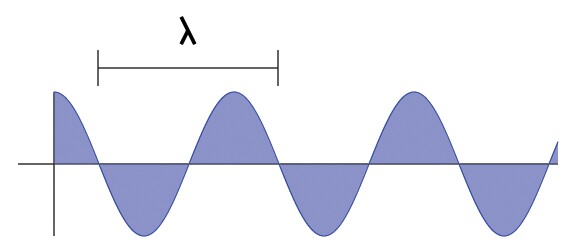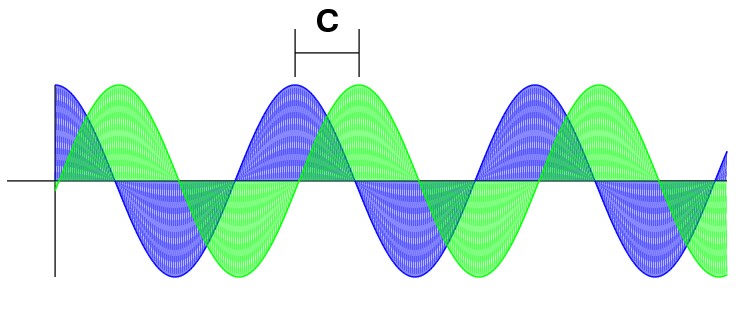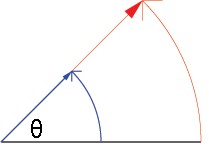
A cosine curve is a periodic function. Over a given amount of time, the function will repeat itself into identical copies, called periods. As you can see, the function resembles a wave. The standard cosine function is based on the unit circle. There are two ways to consider the behaviour of the periodic function.
Time Independent/Position Dependent
Assume that the above graphic has position in the y axis, and the x-axis represents the position of curve. Time is held constant in this equation; imagine that the graphic represents a snapshot of a moving wave at any point in time. Starting from x = 0, the graph takes the value of the x-coordinate as the radius moves around in a counter-clockwise fashion until it returns to its initial starting place.
Time Dependent/Position Independent
Assume the above graphic has position in the y axis, and time in the x-axis (as time increases, the graph moves to the right). The position of interest is held constant in this case. A good example would a Ferris Wheel. Imagine that you are sitting in the same spot in the Ferris Wheel (as is usually the case); your position is now fixed in your seat. As time progresses, the chair begins to move up and down relative to the ground as Ferris Wheel rotates. The above graphic tracks your progress as you oscillate up and down. Your position remains the same, but your height is changing with respect to time.
In any case, the curve that is traced out is the same. This co-dependence allows the wave equation to be properly expressed as y(x,t). However, we will begin our look with the analysis of the wave equation in 1D. Because it is easier to visualize, we will use the time independent equation. There are a few ways to change the visual appearance of a standard wave.



